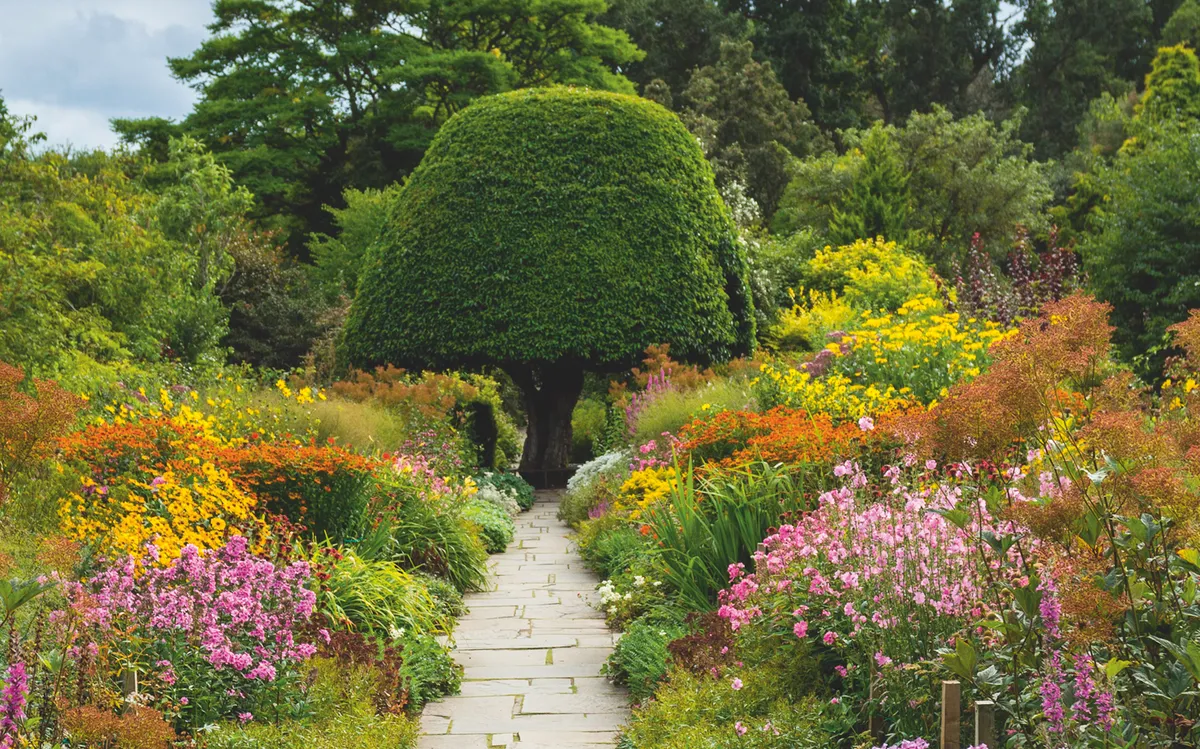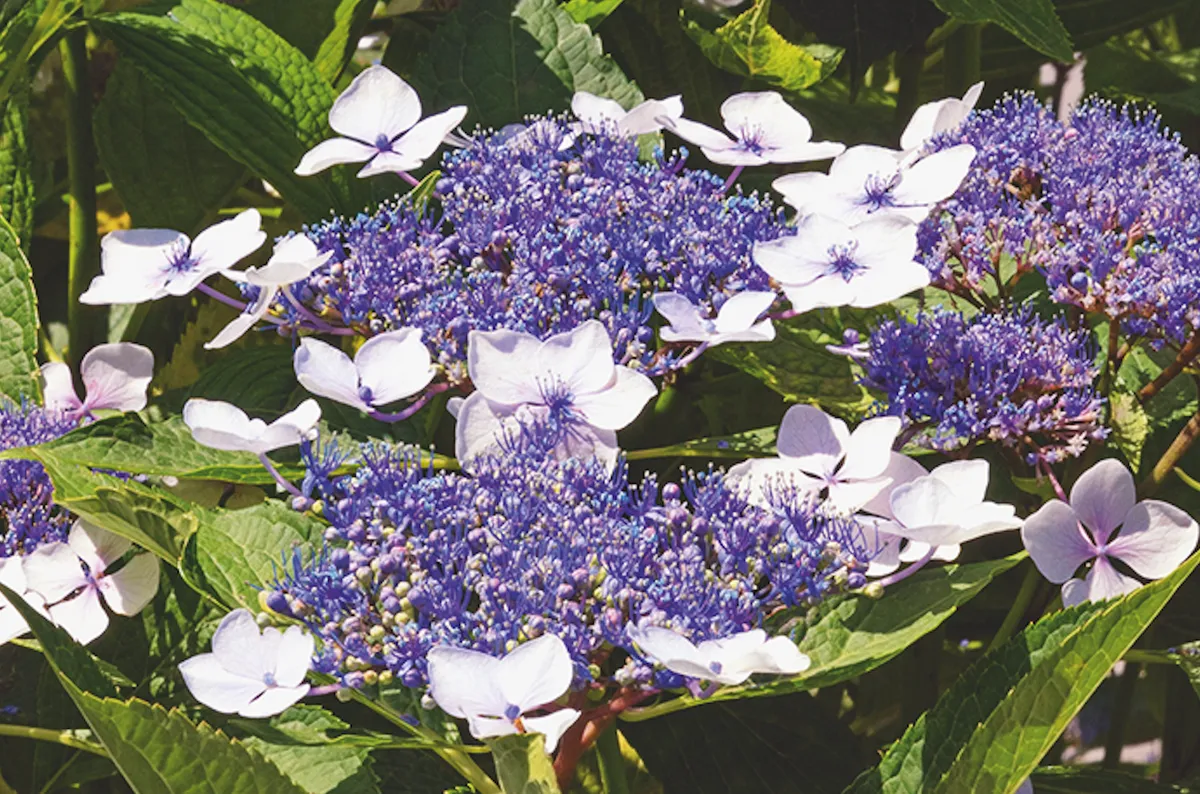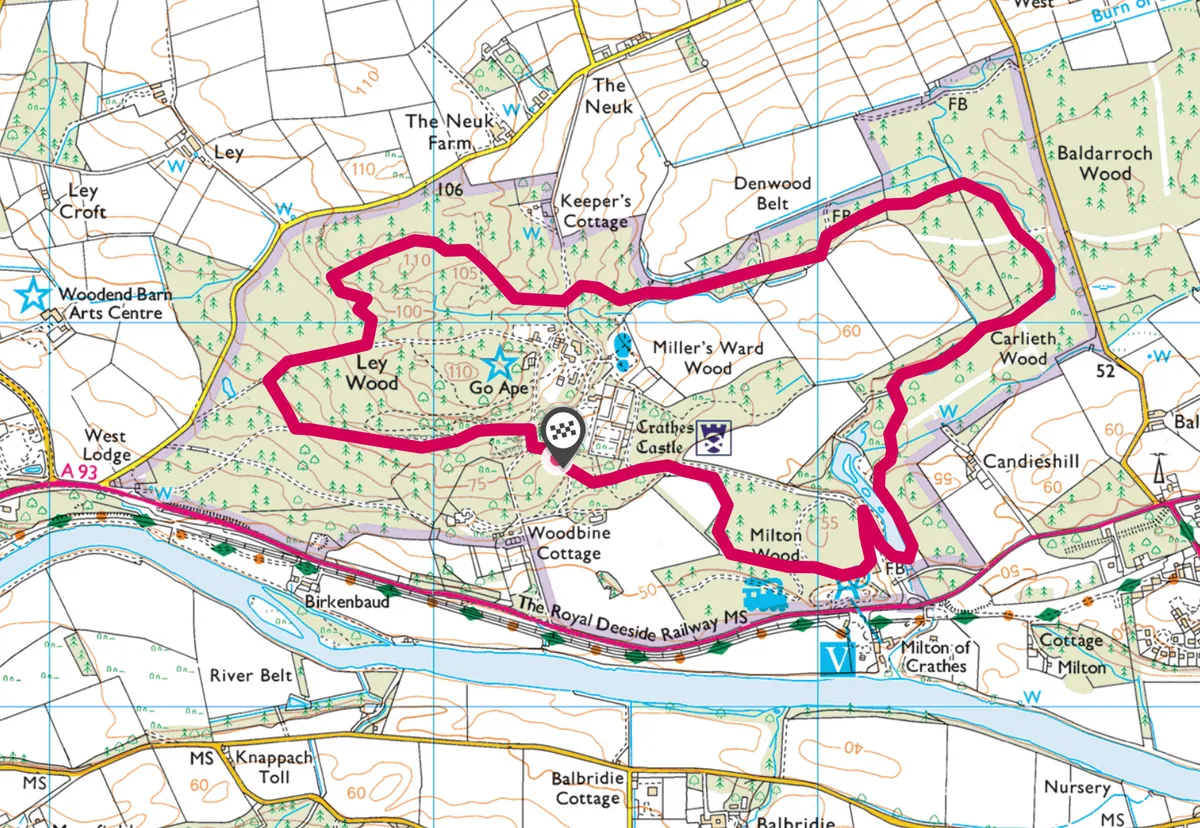Scotland has a wonderful gardening tradition. Much of Scotland’s west coast is softened by high rainfall and the Gulf Stream, perfect conditions for Himalayan, Chilean and New Zealand plants, including blue poppies, rhododendrons and the Chilean lantern tree.
Gardens may be naturalistic where the native topography mimics the mountainous habitats of their homelands. Crathes Castle Garden, one of the finest of all, is situated on a south-facing slope in the Dee Valley 15 miles west of Aberdeen.

History of Crathes Castle Garden
Home to the Burnett family for 400 years until gifted to the National Trust for Scotland in 1952, successive baronets changed the garden but retained some features, creating an eclectic mix of styles from the 18th century to the present.
You may also like:
Things to see at Crathes Castle Garden
The spectacular 1.6-hectare walled garden, adjacent to the castle, is divided into eight areas, notable for their colour themes and rare plants. Much of the planting was the work of plant collector Sir James Burnett and his wife Lady Sybil, a talented designer who transformed the kitchen garden into an ornamental garden in the 1920s.
The upper walled garden boasts ancient topiary, including the iconic ‘egg and egg cups’, a croquet lawn and the Pool Garden. Below is the Fountain Garden and the soon-to-be replanted rose garden. The most recent addition, an Evolution Garden, was created by head gardener James Hannaford.

Late-summer at Crathes Castle Garden
The Gold Garden, a year-round feature, blazes in the late-summer sunlight. Framed with golden conifers and yew, it’s infilled with sunflowers, golden yellow bidens and deep-yellow African daisies creating a hotbed of floral sunshine. The nearby red garden explodes into colour with Amaranthus, lilies and Dahlia ‘Bishop of Llandaff’, setting the tone for the Upper Pool Garden and zingy greenhouse borders.

In the Upper Pool Garden, four L-shaped beds around a square pool are a riot of colour and texture. Deep-purple barberry and castor oil plant, intensely coloured Salvia in shades of cerise, pink and blue, and splashes of crimson Lobelia cardinalis contrast with Gazanias and silvery Artemisia. Euphorbia characais flowers add splashes of lime-green.

The excitement continues outside the glasshouse, in a long border with Canna and castor oil plant, bright pink Diascia personata, vivid multi-coloured Dahlia, more Salvia in deep blue, red and lilac, lime-leaved Helichrysum, sky-blue Felicias and the wonderful architectural forms of succulent Aeoniums (including several rarities from the Canary Islands) and the ink-black seedheads of the shoo fly plant.

Nothing beats the stunning impact of Crathes’ late-summer displays. Those keen to explore can choose from six marked trails. The longest is the Ley Way, an easy four-mile circular walk around the estate, starting at the visitor entrance.
Crathes Castle Garden walk
3.7 miles/6km | 1.5–2 hours | Easy
1. Exotic trees
The walk begins by the castle and leads through pine and mixed woodland, and an exotic tree collection containing many rare specimens.
2. Pastoral views
Climb steps into Caroline’s Garden – a mix of native and non-native plants with an ancient beech tree, whose finger-like roots grasp a rock face. The wood is bordered by farmland, grazed by Highland cattle and punctuated with wonderful views.
3. Pond paradise
At one point the footpath drops to boardwalks over wetlands alongside Coy Burn. From a bridge above a salmon ladder you can watch these wonderful fish on migration. The tranquil Mill Pond and its bird hide is an ideal place to look for kingfishers. You may also see goldcrests, woodpeckers, jays, red kites and red squirrels, even pine martens, otters and badgers.
Crathes Castle Garden map
Crathes Castle Garden walking route and map

Visiting Crathes Castle Garden
No pre-booking available. Café 1702 currently offers a takeaway service. The gardens are open Fri–Mon, 10am–4pm, year round. £14.50 per adult. Grounds open daily from dawn–dusk. nts.org.uk/visit/places/crathes-castle
Words: Matthew Biggs, gardener and writer, heard on BBC Radio 4’s Gardeners’ Question Time.
